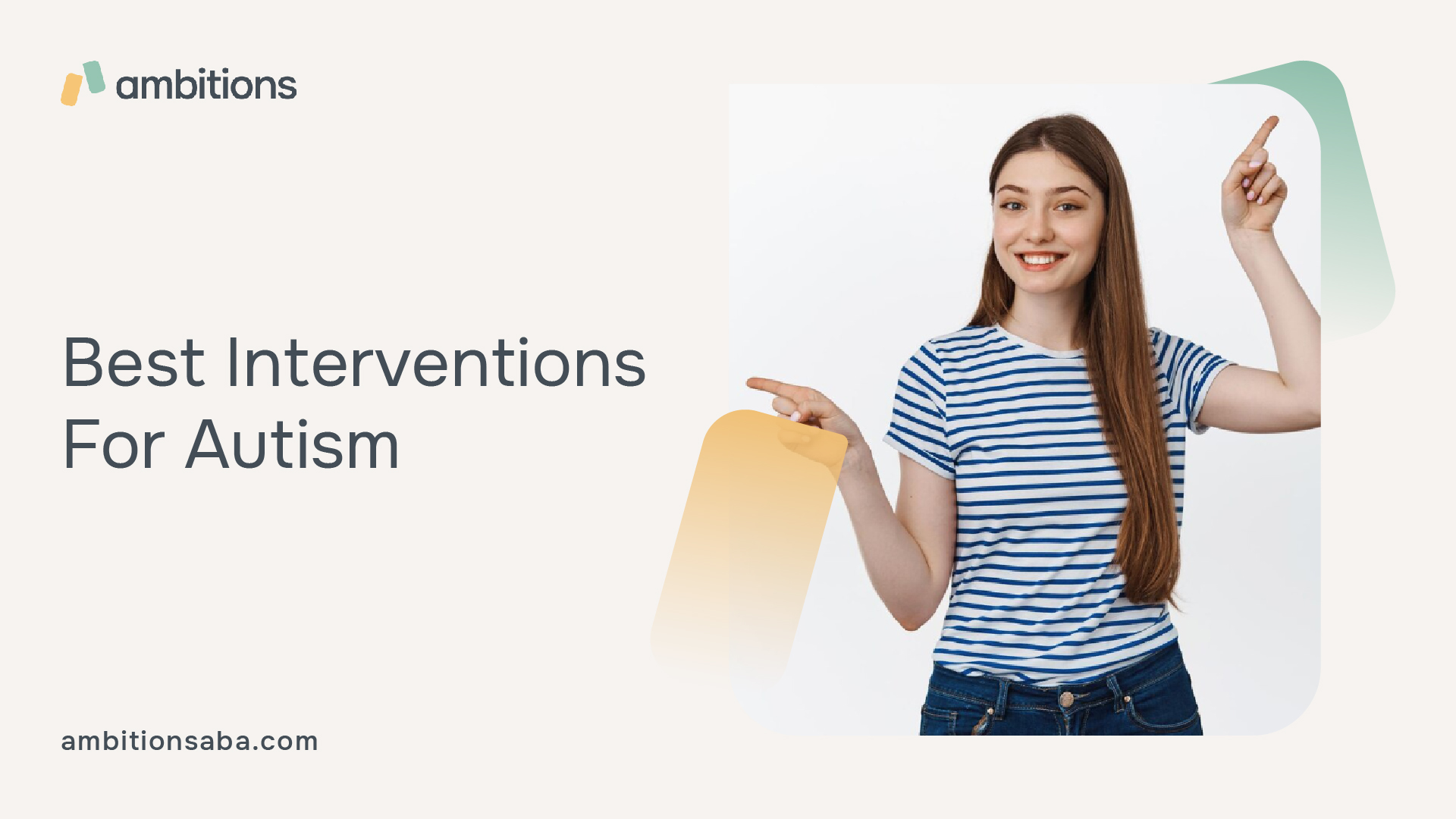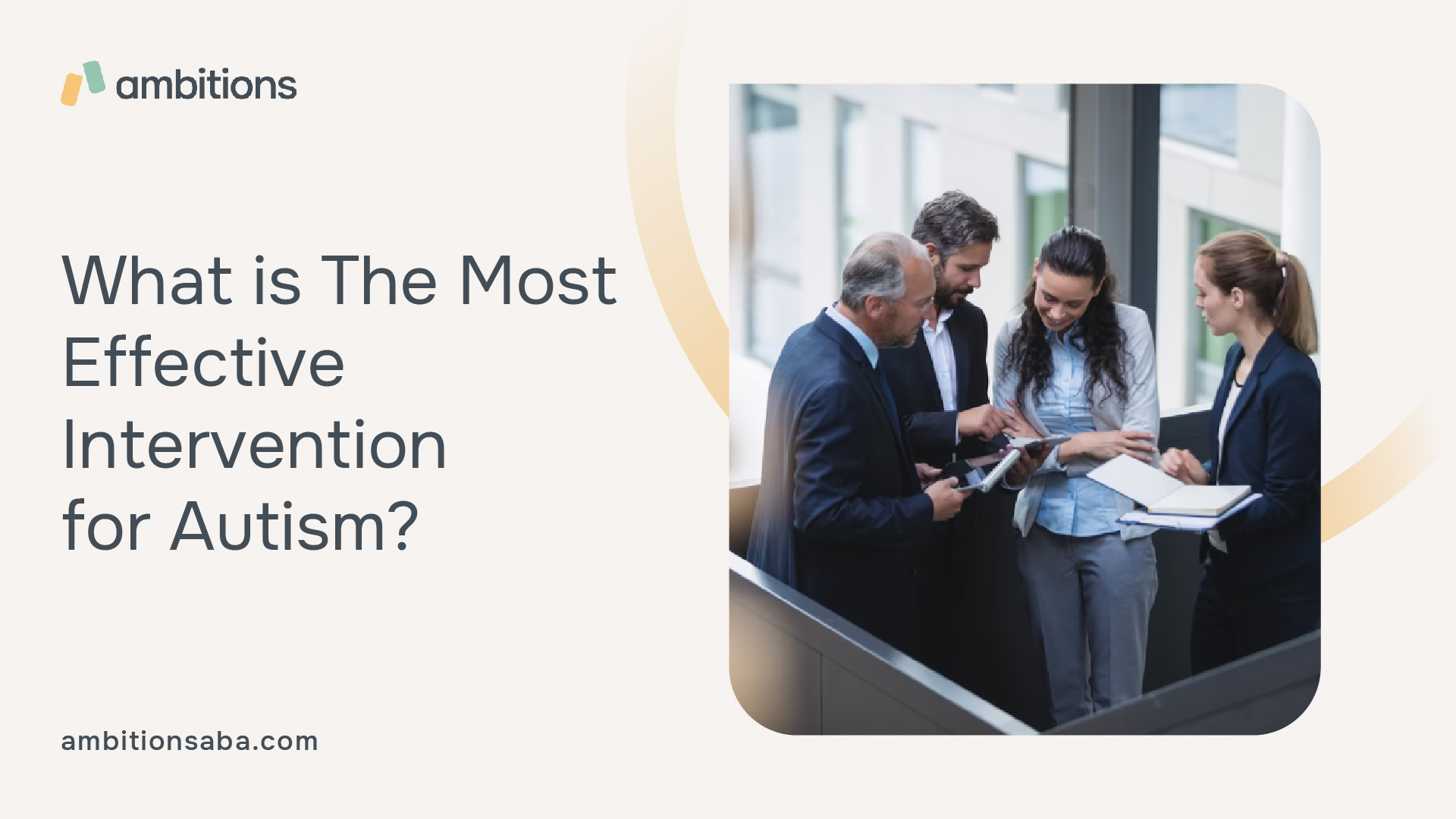Empowering Autism: The Transformative Impact of ABA Therapy on Problem-Solving Skills
Best Interventions For Autism

- Applied Behavior Analysis (ABA)
- Speech Therapy
- Occupational Therapy (OT)
- Social Skills Training
- Picture Exchange Communication System (PECS)
- Augmentative and Alternative Communication (AAC)
- Cognitive Behavioral Therapy (CBT)
- Sensory Integration Therapy
- Music Therapy
- Physical Therapy
1. Applied Behavior Analysis (ABA)
Applied Behavior Analysis (ABA) is a therapy that focuses on teaching skills and reducing problem behaviors. ABA is based on the principles of behaviorism and involves breaking down complex skills into smaller, manageable parts.
The therapist then uses positive reinforcement to encourage desired behaviors and discourage problem behaviors. ABA is considered the gold standard of autism interventions, as it has been shown to be effective for many individuals with ASD.
2. Speech Therapy
Speech therapy is a type of therapy that helps individuals with autism improve their communication skills. Speech therapists work with individuals to develop their speech and language abilities, as well as their social communication skills. Speech therapy can help individuals with ASD improve their ability to express their thoughts and feelings, understand others, and develop meaningful relationships.
3. Occupational Therapy (OT)
Occupational therapy (OT) is a type of therapy that helps individuals with ASD develop the skills they need to perform daily activities. This can include things like dressing, grooming, and eating.
OT can also help individuals with ASD improve their fine motor skills, such as writing and cutting. Additionally, OT can help individuals with ASD develop sensory processing skills, which can help them better understand and respond to sensory input.
4. Social Skills Training
Social skills training is a type of therapy that helps individuals with ASD develop social skills. This can include things like making eye contact, initiating conversations, and understanding social cues.
Social skills training can be done in a group setting or one-on-one with a therapist. The goal of social skills training is to help individuals with ASD develop meaningful relationships and improve their overall quality of life.
5. Picture Exchange Communication System (PECS)
The Picture Exchange Communication System (PECS) is a communication system that uses pictures to help individuals with ASD communicate.
PECS is often used with individuals who have limited verbal abilities. The individual is taught to exchange a picture card for an item or action they desire. PECS can help individuals with autism communicate their needs and wants more effectively.
6. Augmentative and Alternative Communication (AAC)
Augmentative and Alternative Communication (AAC) is a type of communication that uses devices or systems to help individuals with autism communicate.
This can include things like sign language, communication boards, or electronic devices. AAC can help individuals with autism communicate more effectively and can improve their overall quality of life.
7. Cognitive Behavioral Therapy (CBT)
Cognitive Behavioral Therapy (CBT) is a type of therapy that focuses on changing negative thought patterns and behaviors. CBT can be especially helpful for individuals with autism who struggle with anxiety or depression. CBT can help individuals with ASD develop coping skills and improve their overall mental health.
8. Sensory Integration Therapy
Sensory Integration Therapy is a type of therapy that helps individuals with autism improve their sensory processing skills. Sensory Integration Therapy involves exposing individuals to different sensory experiences, such as touch, sound, and movement. The goal of Sensory Integration Therapy is to help individuals with ASD better understand and respond to sensory input.
9. Music Therapy
Music Therapy is a type of therapy that uses music to help individuals with autism improve their communication, socialization, and behavior. Music Therapy can involve listening to music, singing, playing instruments, or creating music. Music Therapy can help individuals with ASD express themselves more effectively and can improve their overall quality of life.
10. Physical Therapy
Physical Therapy is a type of therapy that helps individuals with autism improve their physical abilities. This can include things like balance, coordination, and strength. Physical Therapy can help individuals with ASD improve their overall health and well-being.
Choosing The Best Intervention For Autism

Choosing the best intervention for autism can be a challenging task. Each individual with ASD is unique, and what works for one person may not work for another.
It's important to consider several factors when choosing an intervention, including the individual's age, developmental level, and specific needs.
Additionally, it's essential to work with a qualified professional who can help guide the decision-making process.
One approach to selecting an intervention is to consider evidence-based practices. Evidence-based practices are interventions that have been shown through research studies to be effective for individuals with ASD. Applied Behavior Analysis (ABA) is considered an evidence-based practice and has been shown to be effective in improving communication, social interaction, and behavior.
Another approach is to consider the individual's strengths and interests when selecting an intervention. For example, if an individual with autism has a particular interest in music or art, music therapy or art therapy may be a good option.
It's also important to consider the family's preferences and resources when selecting an intervention. Some interventions require more time commitments or financial resources than others.
Ultimately, the best intervention for autism will depend on the individual's unique needs and circumstances. Working with a team of professionals can help ensure that the most appropriate intervention is selected and implemented effectively.
What is The Most Effective Intervention for Autism?

There is no one-size-fits-all answer to the question of what the most effective intervention for autism is. Every individual with autism has unique needs and may respond differently to different interventions.
However, Applied Behavior Analysis (ABA) is considered by many experts to be the gold standard of autism interventions due to its effectiveness in improving communication, social interaction, and behavior.
That being said, other interventions such as speech therapy, occupational therapy, and social skills training can also be highly effective for individuals with autism. Ultimately, the best intervention will depend on the individual's specific needs and circumstances.
It's important to work with a team of professionals who can help guide the decision-making process and create an individualized treatment plan that is tailored to the individual's needs.
Summary
In conclusion, there are many interventions available to help individuals with autism improve their quality of life. ABA, speech therapy, OT, social skills training, PECS, AAC, CBT, Sensory Integration Therapy, Music Therapy, and Physical Therapy are all effective interventions for individuals with autism.
It is important to work with a qualified professional to determine which interventions are best for each individual with autism. With the right support and interventions, people with autism can lead fulfilling and meaningful lives.

